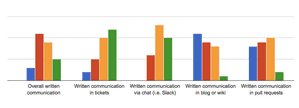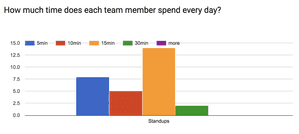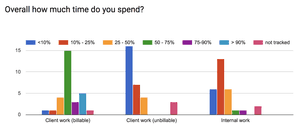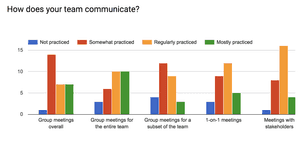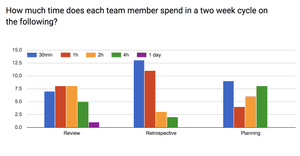Friday 8 December 2017
Team communication & Process - Amazee Agile Agency Survey Results - Part 5
Welcome to part five of our series, processing the results of the Amazee Agile Agency Survey. Previously I wrote about forming discovery and planning. This time let’s focus on team communication and process.
TEAM COMMUNICATION
When it comes to ways how to communicate, the ones that got selected with the highest rating of “mostly practised” where “Written communication in tickets”, “Written communication via Chat (i.e. Slack)” as well as “Group meetings for the entire team”. The options that most often got selected as “Not practised” where “Written communication in blog or wiki” and “Written communication in pull requests”.
For us at Amazee Labs Zurich, a variety of communication channels is essential. Regular 1-on-1 meetings between managers and their employees allow us to continuously talk about what’s important to either side and work on improvements. We communicate a lot via Slack where we have various team channels, channels together with clients related to projects, channels for work-related topics or just channels to talk about fun stuff. Each morning, we start with a short team stand-up for the entire company where we check in with each other, and that’s followed by a more in-depth standup for the Scrum teams where we talk about “What has been done, What will be done and What’s blocking us”. Written communication happens between the team and customers in Jira tickets. As part of our 4-eyes-principle peer review process, we also give feedback on code within pull requests that are used to ensure the quality of the code and train each other.
PROCESS
We talked about iteration length in part 1 of this series. Now let’s look into how much time we spend on which things.
According to the survey, the majority of standups take 15 minutes, followed by 5 minutes and 10 minutes with a few ones taking up to 30 minutes. This also reflects ours: we take 10 minutes for the company-wide stand up amongst 24 team members and another 15 minutes for the Scrum Team specific stand-ups.
For the review-phase, teams equally often selected 2 hours and 1 hour as the top-rated option followed closely by 30 minutes. 4 hours has been chosen by a few other teams, and the last one would be one day. For the retrospectives, the top-rated option was 30 minutes, followed by 1 hour. Much fewer teams take 2 hours or even up to 4 hours for the retrospective. For planning, we saw the most significant gap regarding top rated options: 30 minutes is followed by 4 hours and then 2 hours and 1 hours were selected. In the teams I work with, we usually spend half a day doing sprint review, retrospective and planning altogether. Our reviews typically take 45 minutes, the retrospective about 1.5 hours and the planning another 30 minutes. We currently don’t do these meetings together with customers because the Scrum teams are stable teams that usually work for multiple customers. Instead, we do demos along with the clients individually outside of these meetings. Also, our plannings are quite fast because the team split up stories already in part of grooming sessions beforehand and we only estimate smaller tasks that don’t get split up later on as usually done in sprint planning 2.
When looking at how much time is being spent on Client work (billable, unbillable) and Internal work we got a good variety of results. The top-rated option for “Client work (billable)” was 50-75%, “Client work (unbillable)” was usually rated below 10% and “Internal work” defaulted to 10-25%. Our internal statistics match these options that have been voted by the industry most often. I also asked about what is most important to you and your team when it comes to scheduling time? Providing value while keeping our tech debt in a reasonable place has been mentioned which is also true for us. Over the last year, we started introducing our global maintenance team which puts a dedicated focus on maintaining existing sites and keeping customer satisfaction high. By using a Kanban-approach there, we can prioritise timely critical bugs fixes when they are needed and work on maintenance-related tasks such as module updates in a coordinated way. We found it particularly helpful that the Scrum-teams are well connected with the maintenance-team to provide know-how transfer and domain-knowledge where needed.
Another one mentioned, “We still need a good time tracker.” At Amazee we bill by the hour that we work so accurate time tracking is a must. We do so by using Tempo Timesheets for Jira combined with the Toggl app. How do you communicate and what processes do you follow? Please leave us a comment below. If you are interested in Agile Scrum training, don’t hesitate to contact us. Stay tuned for the next post where we’ll look at defining work.
